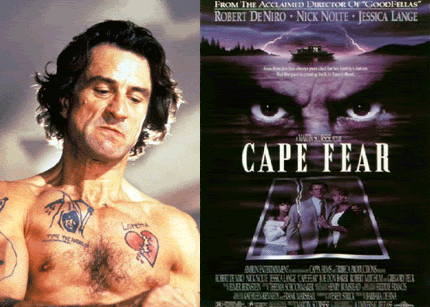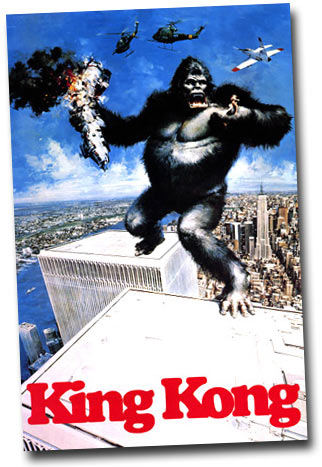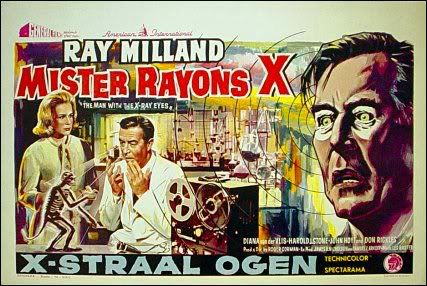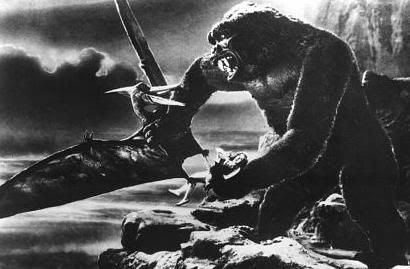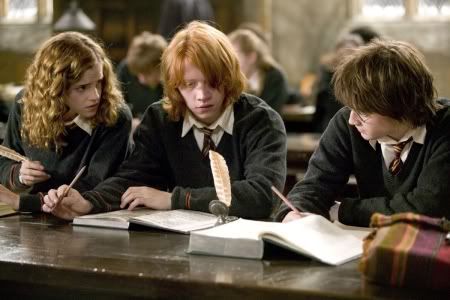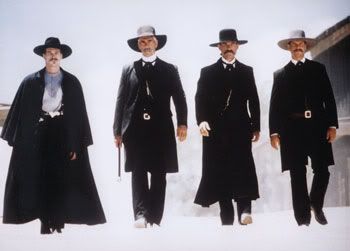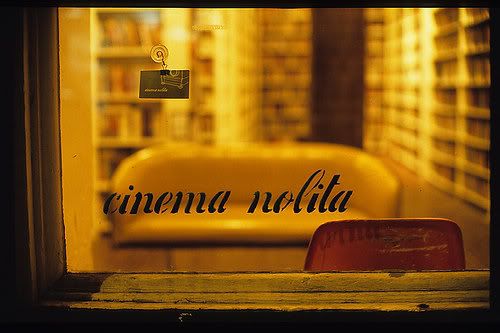Walk The Line
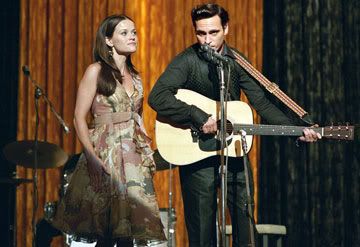
Or; "Johnny Cash: the Spark Notes Version." I'm sorry to continue to churn out so many grumpily critical reviews here, but my opinion stands firm. Walk The Line is a well-meaning but ultimatley shallow and boringly conventional biopic of the Greatest Musician Who Ever Walked, a mere string of 'big moment' snapshots that fails to deliver the true essence of the man.
To get one the biggest problem out of the way first - they didn't use his songs! Apart from an authentic version of "Long Legged Guitar-Pickin' Man" played during the end credits, Joaquin Phoenix and Reese Witherspoon do their own singing. What the crap? To me, that's like making a cake and not putting any flour in it. If you're making a biopic, which is supposed to explore the life of a particular person, and you opt to leave out the one thing that they're most famous for, you're off to a pretty rocky start, even if your movie is a meaningful and unique one. Sadly, Walk The Line isn't, it's the same old fluff we've seen more than a hundred times.
According to the Hollywood Biopic, every famous person ever whose name isn't George Patton or Edward D. Wood Jr. has had exactly the same life, from a childhood trauma to their fall from grace, a descent into some kind of addiction or another, until they picked themselves up by their bootstraps and settled down with the girl of their dreams. I'd call it the "Great Illustrated Classics" version of Cash: The Autobiography, but that would be doing Johnny's book a massive disservice. I'm not insisting they should have packed every little anecdote from its pages into the movie. I'm not even suggesting that everything Johnny wrote in his book was completley true so much as his life how he saw it and what he thought was worth writing about. It is, quite simply, a better story than the one directed by James Mangold. Way better. The extent of the living hell that was Cash's amphetamine addiction, which was so chillingly vivid on the page, is never three-dimensionalized here, just a few stumbles on stage and sweaty forehead closeups. His spirituality is never really examined either, and the origin of his love of country music is barely touched upon.
According to Johnny, the reaffirmation of his Faith, as well as the final step towards bringing him and June together came together as a result of the very worst final stage of his addiction. Allegedly, he became so horrified at what he had become that he crawled down into a hole - a partiular abandoned mine, or some kind of natural underground cave, I don't completley remember - and submerged himself in the darkness, not having any idea where he was, and just waited to die. He waited for a days until, apparently, he heard "The Call", realized that it wasn't his time, and found his way out of the pitch-black tunnel, only to find June and his mother waiting on the surface for him. Now, I am perfectly open to the idea that this story could complete baloney, but nobody can tell me it doesn't make a better story than the third act of Walk The Line. Johnny keeps asking and asking and asking June to marry him, she always says no, so one day he asks her onstage. She says yes. Applause. Bleugh.
To give a little credit where credit's due, the film is not without any good points at all. Reese Witherspoon, after years of starring in unwatchable romantic comedies, really shines as June Carter, capturing a great deal of the lady's charisma and twinkle. Her iron determination to help Johnny pick himself up left quite a lot to be desired, but that was more the script's fault than hers. As for Joaquin Phoenix, he tries his best, and damn-near nails a lot of Johnny's onstage mannerisms (the crooked smile, tilted head and near-clumsy looking guitar playing style) but in the end, he falls flat - he's just trying to fill an impossible set of footsteps. Johnny Cash was such a BIG person; and his voice, persona, and spirit are things that I don't think can be successfully recreated by anyone. Hardcore Cash fans will walk away feeling like they've only eaten one potato chip, and while those only casually familiar with him may enjoy themselves (and hopefully young'uns new to his music will be inspired to check out some of his CDs) they'll still have watched something that merely dips its toe in the water of a mighty river, and never really explored the importance of the man and what made Johnny Cash Johnny Cash.

